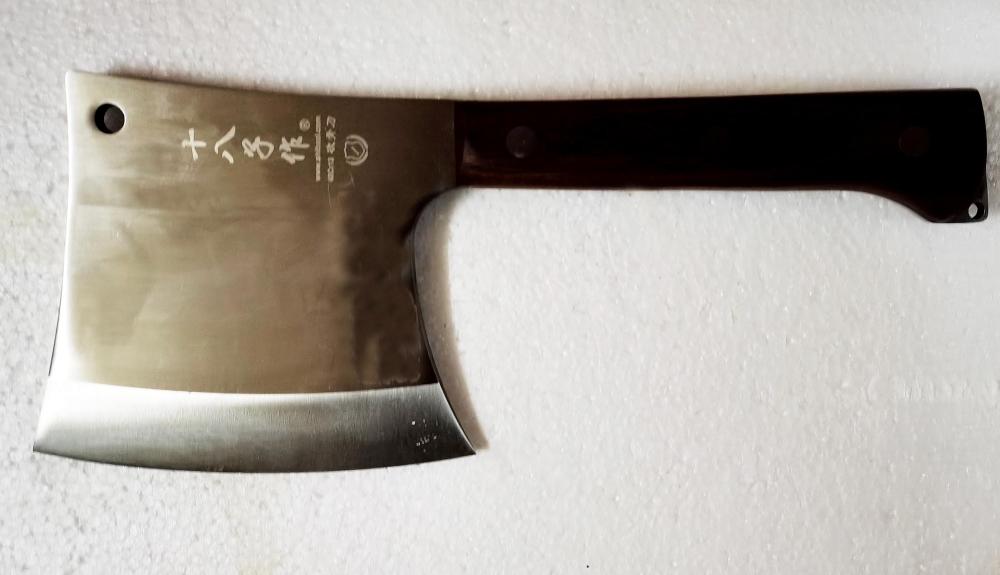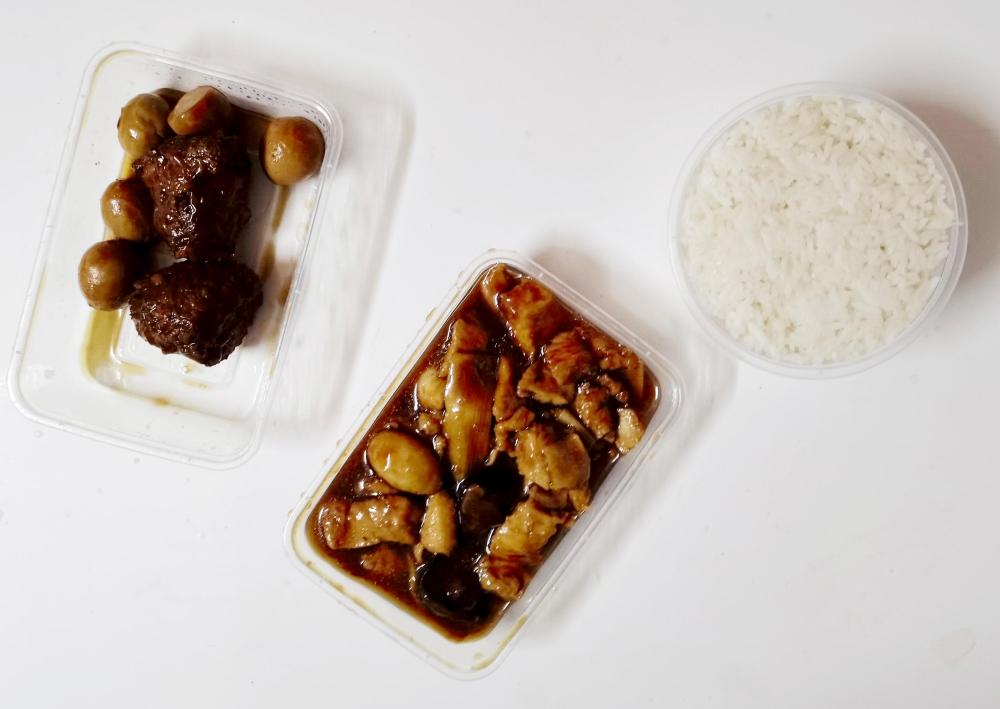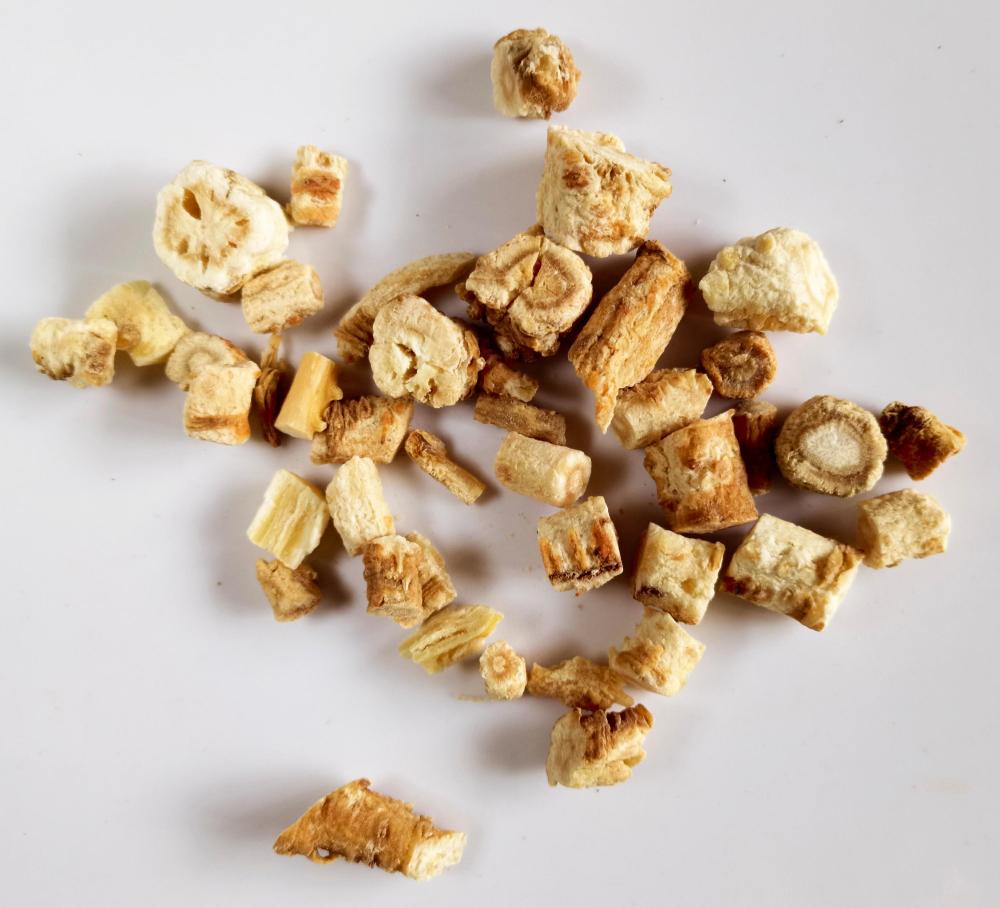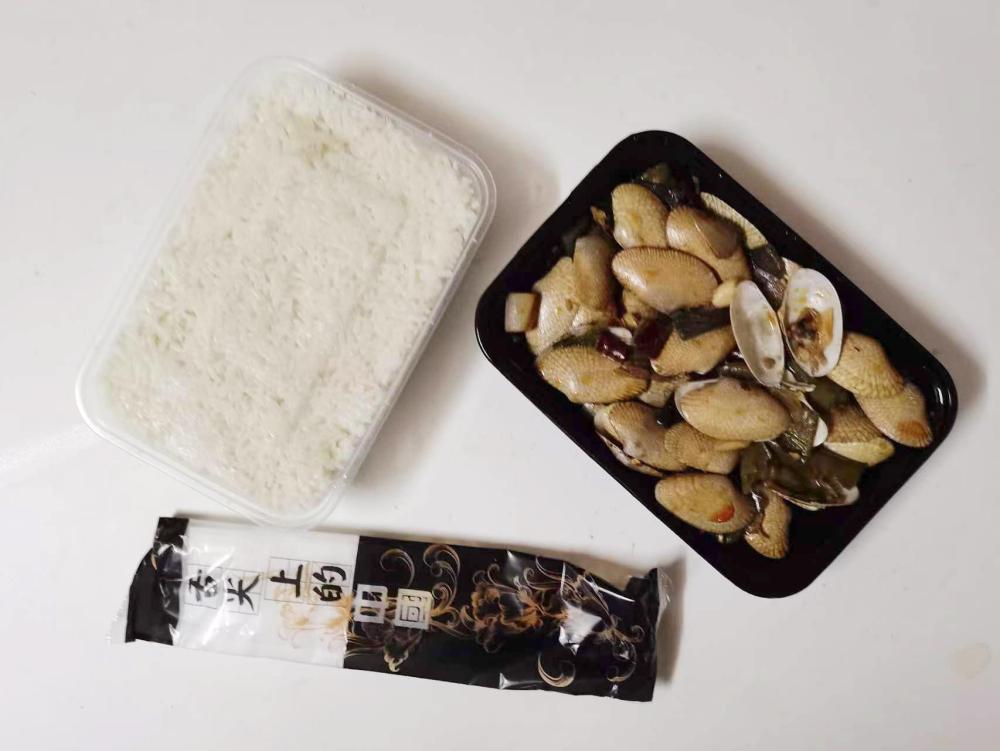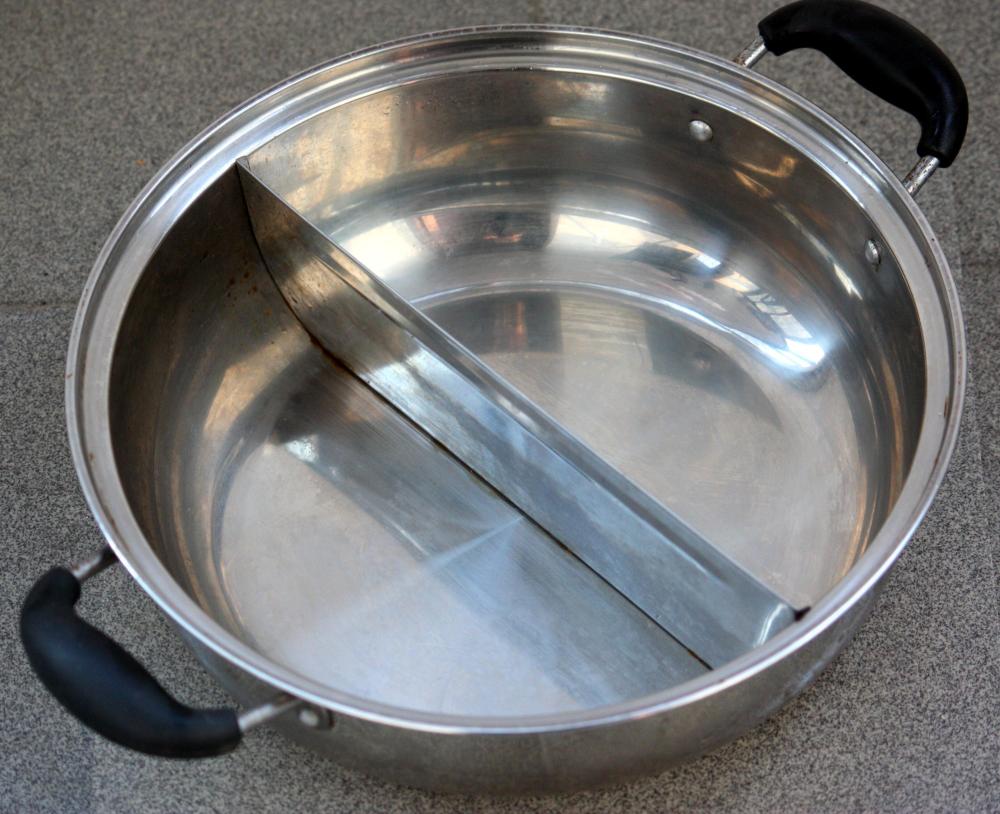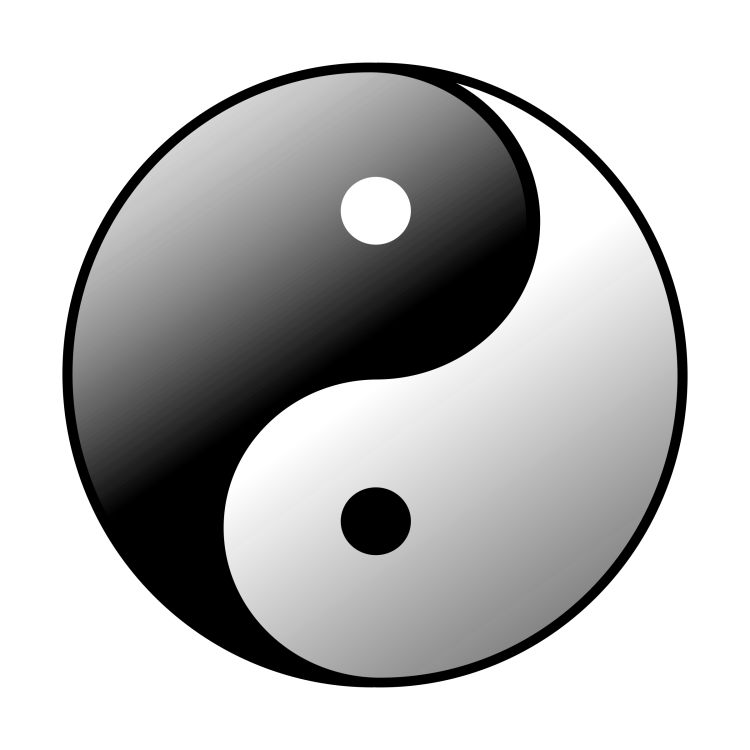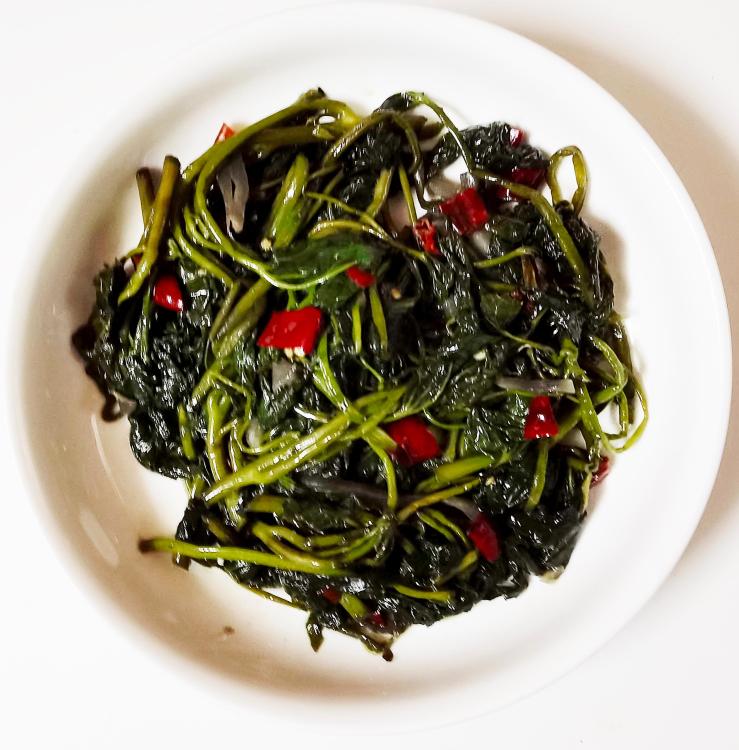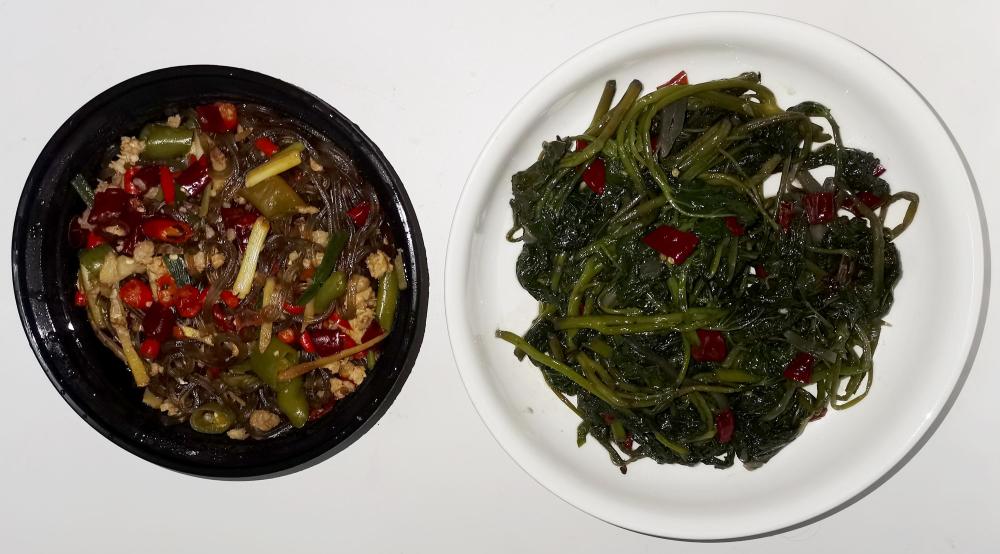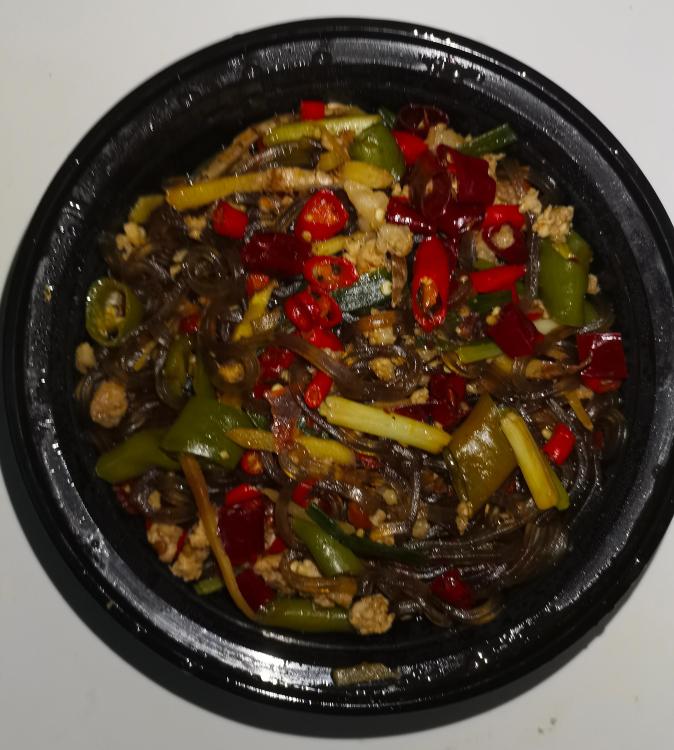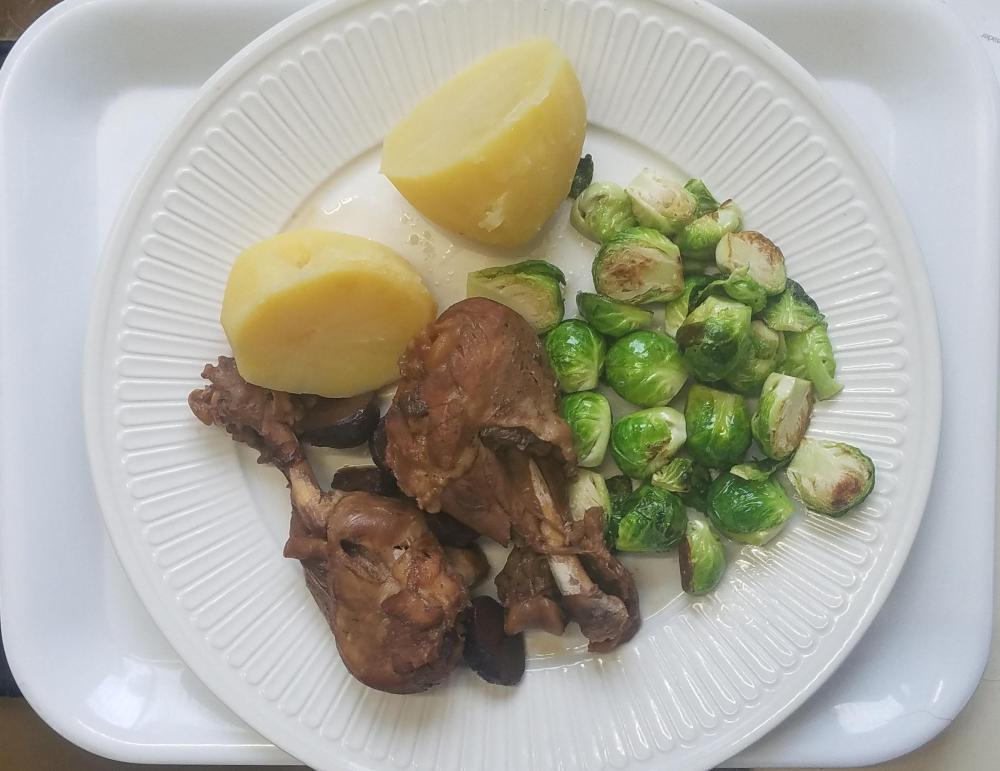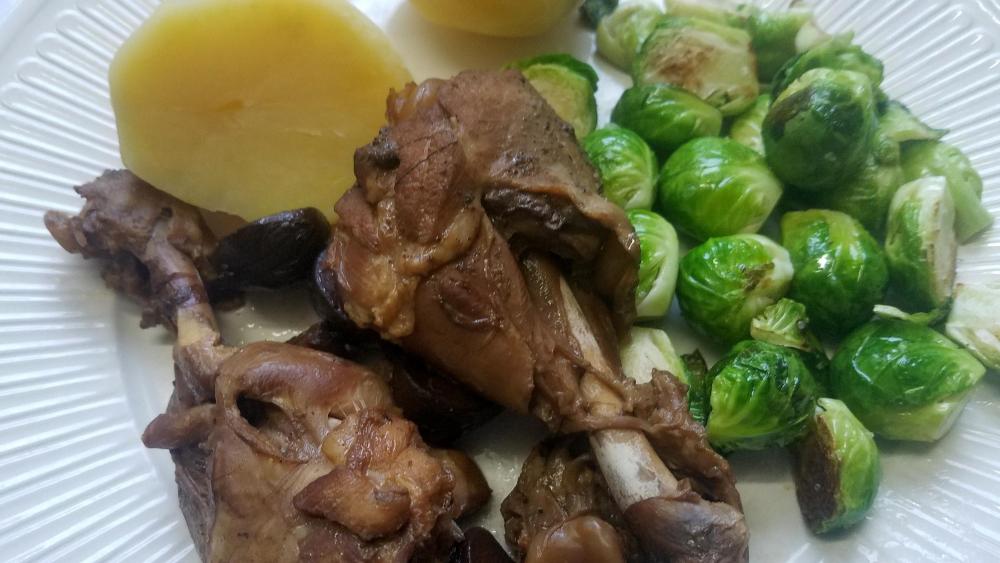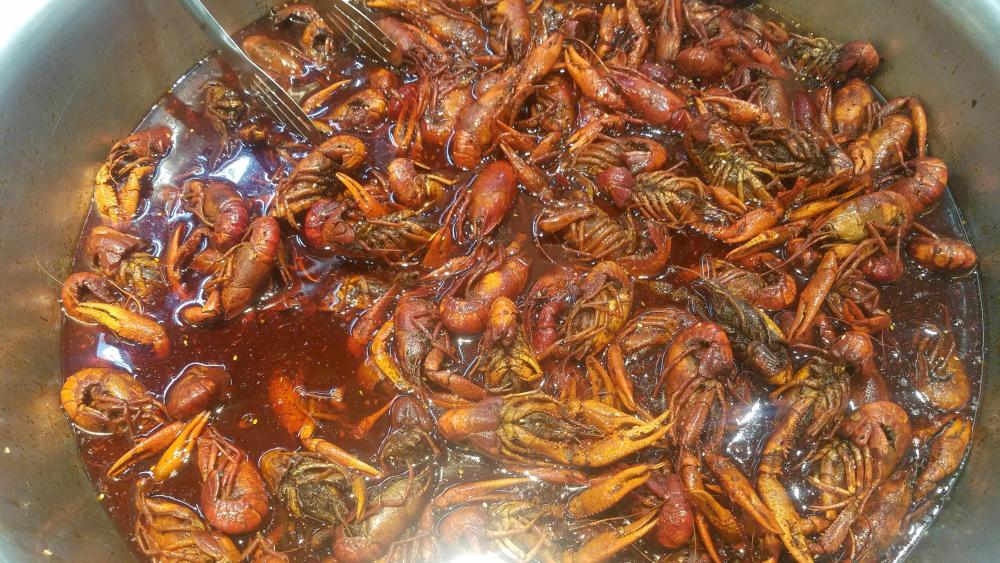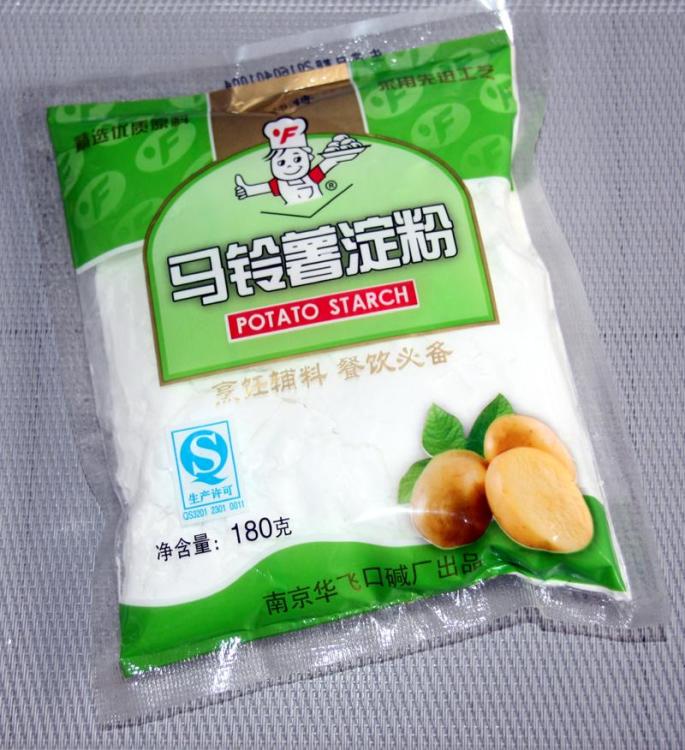-
Posts
16,674 -
Joined
-
Last visited
Content Type
Profiles
Forums
Store
Help Articles
Everything posted by liuzhou
-
It's rare for me to spatchcock chickens although I've dispatched a few. When I am called upon to do either, I use this.
-
红烧狮子头 (hóng shāo shī zǐ) - Red-Cooked Lion's Head Meatballs 香卤鹌鹑蛋 (xiāng lǔ ān chún dàn) - Stewed Salted Quail Eggs 香菇滑鸡 (xiāng gū huá jī) - Fried Chicken with Shiitake 米饭 (mǐ fàn) - Rice
-
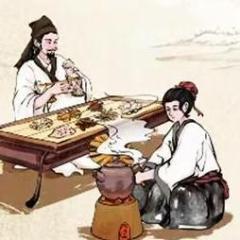
Airline Food: The good, the bad and the ugly
liuzhou replied to a topic in Food Traditions & Culture
Yes, me too. The ones I am referring to were, I think just shown a glass of water from the other side of the kitchen. Hospital catering is designed to recruit new patients, I think. -

Airline Food: The good, the bad and the ugly
liuzhou replied to a topic in Food Traditions & Culture
But possible to undercook as I know to my regret. I recently had some which were inedible. Guess where? ☣ -
I didn't realise sand ginger (沙姜 -shā jiāng) was so rare. It's in every supermarket here, both 'fresh' (both young and old) and in the dried, sliced form but in different sections. The fresh variety is in the vegetables aisles whereas the dried is in the TCM herbs section. I can also order either type online and have it delivered with in the half hour. Dried Sliced Sand Ginger
-
If I were to start posting all the mis-spellings and mistranslations I see every day, I'd have a full time job. I think I've only ever posted one. Crap instead of carp. Of course, the errors are in several languages. Including Chinese (although not technically mis-spelling, the use of the wrong, but homophonic character can be hilarious. 螺蛳粉 (luó sī fěn) 螺丝粉 (luó sī fěn) are pronounced identically but the first means 'snail noodles' and the second, 'screw noodles'. They are often confused, even by cafe type shops selling the dish, Liuzhou's signature dish. One place near me has two signs; one wrong, one correct. But my favourite is this. The sign on the left reads "螺狮粉" (luó shī fěn) which means 'spiral lion noodles'
-
-

eG-Inspired Kitchen Gadget Purchases (aka The Enablers' Hall of Fame)
liuzhou replied to a topic in Kitchen Consumer
No room for a double rice cooker? I mean those dorms are short on hiding spaces. Came across this today. You may not be able to multiply but you can divide. 鸳鸯电饭锅 (yuān yang diàn fàn guō) Mandarin Duck Rice Cooker. Apologies for image quality. It's a screenshot from a video advertisement. I'll try to find a better image and replace but the inner bowl of the cooker is divided in two like this ... ... but with the dividing barrier taking the traditional 阴阳 (yīn yáng) shape. -
I see what you mean, but the historical record shows otherwise. Both meanings seem to have arisen together. In fact, the "something that affected an organism" is recorded first (1585), a mere 16 years before the "the condition of an organism" meaning.
-
蚂蚁上树 (mǎ yǐ shǎng shù) / 小蛮椒 (xiǎo mán jiāo), Ants Climbing Trees* / Small Barbarian Peppers. 干椒酸笋红薯苗 (gān jiāo suān sǔn hóng shǔ miáo) Dried Chilli, Pickled Bamboo, Sweet Potato Shoots. *“Ants Climbing Trees” is a classic Sichuan dish comprising mung bean starch noodles (glass noodles) with minced pork. The grains of pork are the ants which appear to be climbing the branches of the tree (the noodles). Some sort of green vegetable is incorporated to be the tree’s leaves; here this rôle is taken by green chillies. In case that isn’t hot enough this one was supplemented by Small Barbarian Peppers. These are fiery red chilli peppers, so called as they, like all chilli peppers, were introduced from the central Americas where be barbarians! Sweet potatoes are on the barbarous side, too.
-
Been there. Right now my biggest problem is getting the oven door open. Haven't used it for nine months.
-
I understand completely but I like cooking and even the required shopping. And I miss it a lot. However standing up is too exhausting and very painful. Even slicing a bit of cheese to put on a cracker is a trial. I am recovering they tell me, but it's so slow.
-
Soy braised chicken legs, boiled spuds and Brussels sprouts. First meal I've cooked for months. Might be a while till I cook again. Exhausted me.
-
-

eG-Inspired Kitchen Gadget Purchases (aka The Enablers' Hall of Fame)
liuzhou replied to a topic in Kitchen Consumer
-
Neither do I. As I said, corn starch is the most commonly available in China. Sichuan does prefer potato. Here in Guangxi both are used. That Bon Appetit article claims that potato starch noodles are used in what they call 'Loh shi fun", by which I think they mean 螺蛳粉 (luó sī fěn), Liuzhou's famous export. If so, it's nonsense. Potato noodles are a thing, but luosifen never uses them. It uses rice noodles.
-
cooking Anything Cornstarch Can Do, Potato Starch Can Do Better - Bon Appetit https://www.bonappetit.com/story/what-is-potato-starch
-
I find that bizarre. In my exerience potato starch is an exellent sauce thickener. In fact, that's how it is mostly used here. Chinese cooks don't use starch or anything else as breading often at all. Certainly, not as much as people in the west seem to think. Breaded pork or chicken in day-glo sweet and sour sauce ain't Chinese!
-

eG-Inspired Kitchen Gadget Purchases (aka The Enablers' Hall of Fame)
liuzhou replied to a topic in Kitchen Consumer
Students here are in the same situation, although more out of fire and hygiene concerns than aged electrical systems but, I know, some students get round it surreptitiously. I have seen some appliances advertised as being 'dormitory' friendly but not, so far, rice cookers. Rice is virtually free from the college canteens; cooking rice is not something students crave. -
Starch is starch. No matter the source, they all do the same job. What makes one "more better" is more local availability. China certainly uses c⊘rn starch (it is the most commonly used starch here), but mainly in the south and east of the country. Nothing to do with being a new world crop - China is the second largest producing nation after the USA. It's more a climate issue. I forget where you are located. I suspect however, it may be a linguistic question. For example, 'c⊘rn starch' is 'c⊘rnflour' in the UK.
-
I'd be very surpised if Mongolia uses c⊘rn starch. Too far north. I certainly don't recall it there. But any culinary starch should do the same. Most Sichuan stir-fried dishes, for example, use potato starch as do dishes elsewhere here in China. Wheat flour is rarely, if ever, used for coating meats.
-

eG-Inspired Kitchen Gadget Purchases (aka The Enablers' Hall of Fame)
liuzhou replied to a topic in Kitchen Consumer
$64 CDN eqivalent here. -
In that case, I won't tell you that lot cost me $7 USD (inc delivery).
-

eG-Inspired Kitchen Gadget Purchases (aka The Enablers' Hall of Fame)
liuzhou replied to a topic in Kitchen Consumer
Not a lot to add. Just two rice cookers in one. Can be operated separately or in tandem. So you can make rice and soup (or whatever) simultaneously should you require. Many people use rice cookers for non-rice cooking tasks so I can see it working for some people, if a bit gimmicky.


